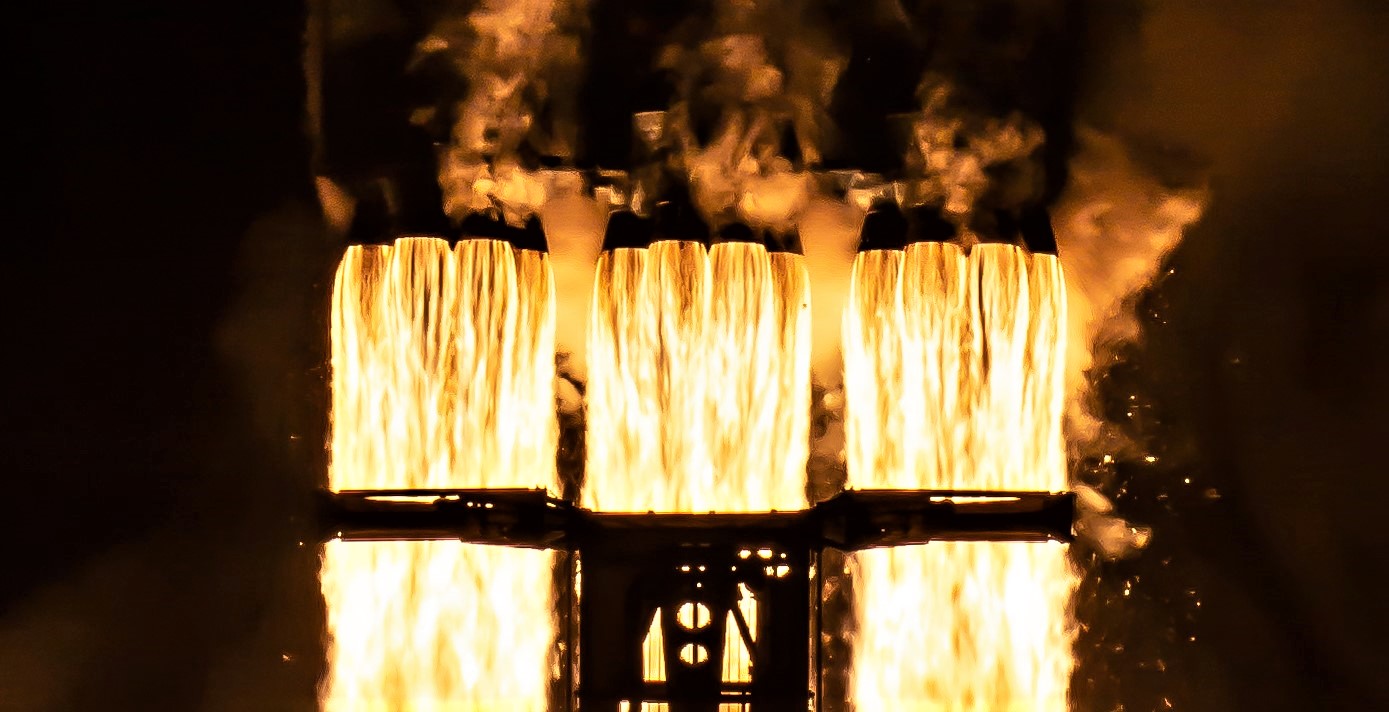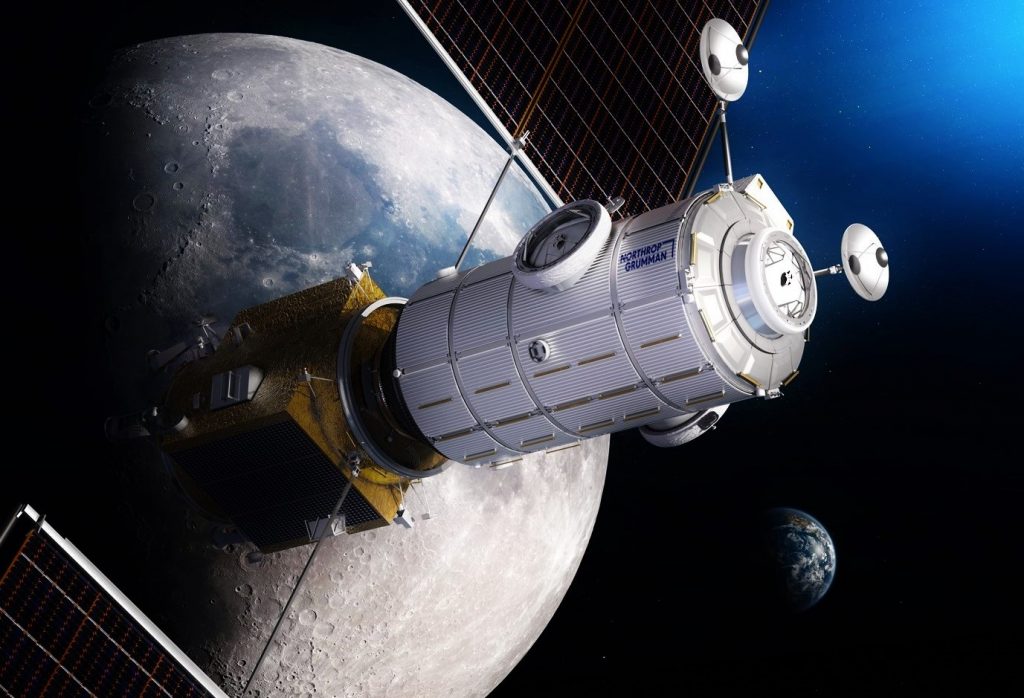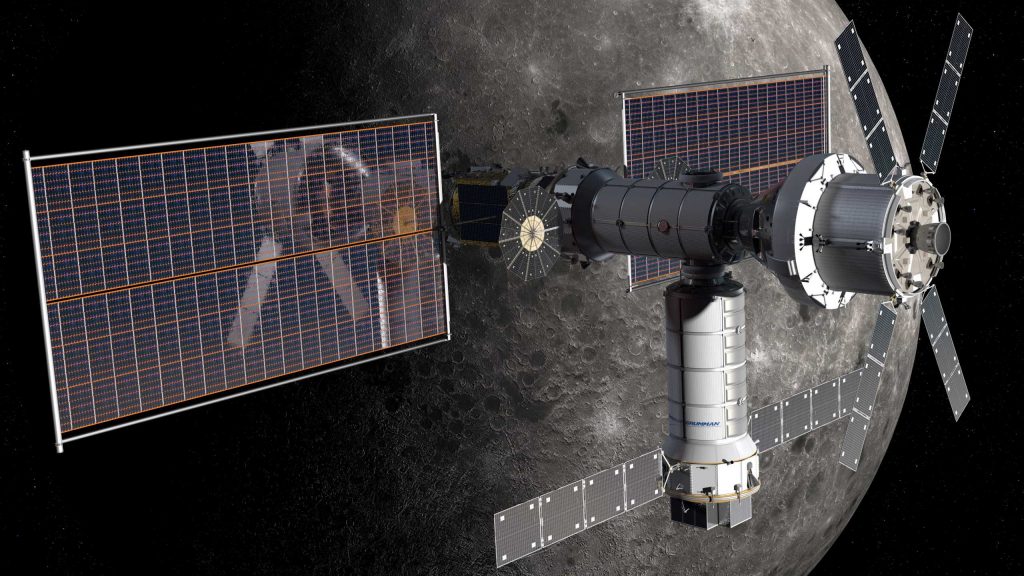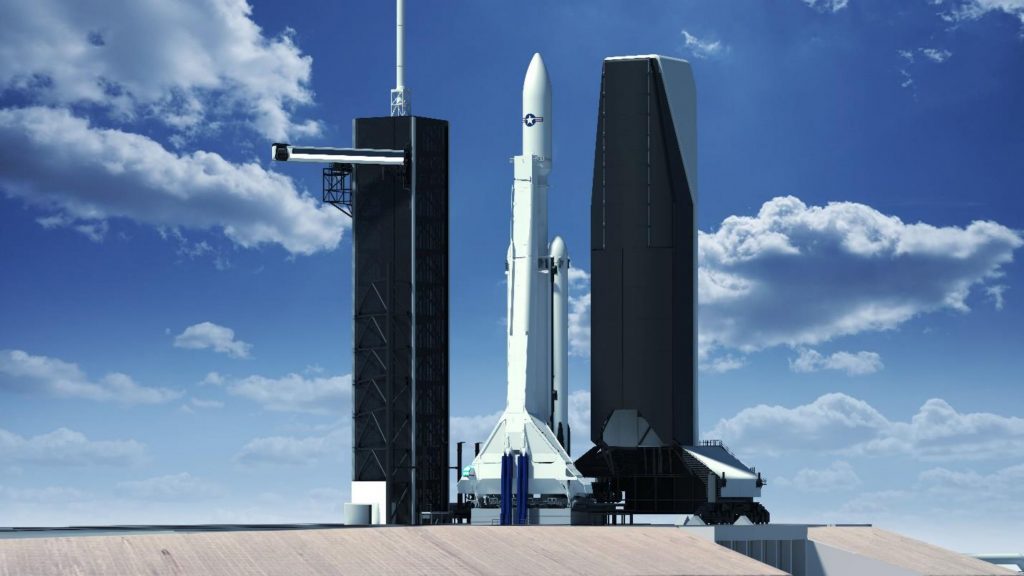

News
NASA chooses SpaceX to launch a self-propelled space station to the Moon
Days after SpaceX won a NASA contract to launch a galaxy-mapping space telescope, the space agency has selected Falcon Heavy to launch a small space station to the Moon some four years from now.
Loosely known as Gateway, NASA and a few of its ‘centers’ have been floating the concept for years – partially on its merits as a potential platform to dip toes into crewed deep spaceflight and explore the Moon but mostly as a way to give the bloated Space Launch System (SLS) rocket and Orion spacecraft a destination for destination’s sake. Weighed down by an extremely inefficient European Service Module (ESM), NASA couldn’t use Orion to replicate its famous Apollo Moon missions if it wanted to.
Lacking the necessary performance to safely place Orion and its astronauts into the Low Lunar Orbit (LLO) optimal for a new round of crewed Moon landings, Orion/ESM on its own is limited to higher, more exotic lunar orbits with less immediate value. As a result, NASA’s Lunar Gateway will be delivered to a “near-rectilinear halo orbit” (NRHO) where it will orbit the Moon’s poles at altitudes between 3,000 and 70,000 kilometers (1,900-43,000 mi).

Bureaucratic machinations and sunk-cost fallacies aside, any space station orbiting the Moon would be an impressive technical feat and an undoubtedly exciting venture. NASA says SpaceX’s combined Power and Propulsion Element and Habitation and Logistics Outpost (PPE/HALO) Falcon Heavy launch contract will ultimately cost approximately $332 million, although that figure includes vague “other mission-related costs” that could have nothing to do with SpaceX and be separate from the company’s actual launch services.
Less than a year ago, NASA awarded SpaceX $117 million to launch Psyche – a scientific spacecraft with an overall cost similar to PPE/HALO – on Falcon Heavy.

Possibly contributing to the unusually high cost is the fact that Falcon Heavy will need a stretched payload SpaceX is already working on for the US military to launch the massive PPE/HALO stack, which will stand around 15 meters (50 ft) tall and weigh ~14 metric tons (~31,000 lb) when combined. While heavy, that payload mass is somewhat mundane for SpaceX, which has launched 17 16-metric-ton batches of Starlink satellites since November 2019.
What isn’t mundane for SpaceX is launching such a large payload beyond Starlink’s low Earth orbit (LEO) destination. According to a virtual presentation recently given by a Northrop Grumman HALO engineer, PPE/HALO will be delivered to an elliptical orbit similar but lower than the geostationary transfer orbit (GTO; ~250 km by ~36,000 km) traditional for commercial communications satellites.

That low target orbit thankfully means that PPE/HALO wont be SpaceX’s first fully expendable Falcon Heavy launch. Depending on how far below GTO NASA is willing to accept, SpaceX could potentially launch PPE/HALO and attempt to land all three first boosters at sea, a configuration that leaves enough performance to send 10 metric tons to GTO. If SpaceX proposed Falcon Heavy with an expendable center core, the rocket could feasibly launch PPE/HALO beyond GTO, cutting the amount of time it would take for PPE to slowly spiral out to the Moon with its electric thrusters.
NASA says the launch is scheduled no earlier than (NET) May 2024 – decidedly optimistic given that the space agency has yet to even award HALO’s production contract.
News
Tesla begins Robotaxi certification push in Arizona: report
Tesla seems serious about expanding its Robotaxi service to several states in the coming months.

Tesla has initiated discussions with Arizona transportation regulators to certify its driverless Robotaxi service in the state, as per a recent report from Bloomberg News. The move follows Tesla’s launch of its Robotaxi pilot program in Austin, Texas, as well as CEO Elon Musk’s recent comments about the service’s expansion in the Bay Area.
The Arizona Department of Transportation confirmed to Bloomberg that Tesla has reached out to begin the certification process for autonomous ride-sharing operations in the state. While details remain limited, the outreach suggests that Tesla is serious about expanding its driverless Robotaxi service to several territories in the coming months.
The Arizona development comes as Tesla prepares to expand its service area in Austin this weekend, as per CEO Elon Musk in a post on X. Musk also stated that Tesla is targeting the San Francisco Bay Area as its next major market, with a potential launch “in a month or two,” pending regulatory approvals.
Tesla first launched its autonomous ride-hailing program on June 22 in Austin with a small fleet of Model Y vehicles, accompanied by a Tesla employee in the passenger seat to monitor safety. While still classified as a test, Musk has said the program will expand to about 1,000 vehicles in the coming months. Tesla will later upgrade its Robotaxi fleet with the Cyercab, a two-seater that is designed without a steering wheel.
Sightings of Cybercab castings around the Giga Texas complex suggests that Tesla may be ramping the initial trial production of the self-driving two-seater. Tesla, for its part, has noted in the past that volume production of the Cybercab is expected to start sometime next year.
In California, Tesla has already applied for a transportation charter-party carrier permit from the state’s Public Utilities Commission. The company is reportedly taking a phased approach to operating in California, with the Robotaxi service starting with pre-arranged rides for employees in vehicles with safety drivers.
News
Tesla sets November 6 date for 2025 Annual Shareholder Meeting
The automaker announced the date on Thursday in a Form 8-K.

Tesla has scheduled its 2025 annual shareholder meeting for November 6, addressing investor concerns that the company was nearing a legal deadline to hold the event.
The automaker announced the date on Thursday in a Form 8-K submitted to the United States Securities and Exchange Commission (SEC). The company also listed a new proposal submission deadline of July 31 for items to be included in the proxy statement.
Tesla’s announcement followed calls from a group of 27 shareholders, including the leaders of large public pension funds, which urged Tesla’s board to formally set the meeting date, as noted in a report from The Wall Street Journal.
The group noted that under Texas law, where Tesla is now incorporated, companies must hold annual meetings within 13 months of the last one if requested by shareholders. Tesla’s previous annual shareholder meeting was held on June 13, 2024, which placed the July 13 deadline in focus.
Tesla originally stated in its 2024 annual report that it would file its proxy statement by the end of April. However, an amended filing on April 30 indicated that the Board of Directors had not yet finalized a meeting date, at least at the time.
The April filing also confirmed that Tesla’s board had formed a special committee to evaluate certain matters related to CEO Elon Musk’s compensation plan. Musk’s CEO performance award remains at the center of a lengthy legal dispute in Delaware, Tesla’s former state of incorporation.
Due to the aftermath of Musk’s legal dispute about his compensation plan in Delaware, he has not been paid for his work at Tesla for several years. Musk, for his part, has noted that he is more concerned about his voting stake in Tesla than his actual salary.
At last year’s annual meeting, TSLA shareholders voted to reapprove Elon Musk’s compensation plan and ratified Tesla’s decision to relocate its legal domicile from Delaware to Texas.
Elon Musk
Grok coming to Tesla vehicles next week “at the latest:” Elon Musk
Grok’s rollout to Tesla vehicles is expected to begin next week at the latest.

Elon Musk announced on Thursday that Grok, the large language model developed by his startup xAI, will soon be available in Tesla vehicles. Grok’s rollout to Tesla vehicles is expected to begin next week at the latest, further deepening the ties between the two Elon Musk-led companies.
Tesla–xAI synergy
Musk confirmed the news on X shortly after livestreaming the release of Grok 4, xAI’s latest large language model. “Grok is coming to Tesla vehicles very soon. Next week at the latest,” Musk wrote in a post on social media platform X.
During the livestream, Musk and several members of the xAI team highlighted several upgrades to Grok 4’s voice capabilities and performance metrics, positioning the LLM as competitive with top-tier models from OpenAI and Google.
The in-vehicle integration of Grok marks a new chapter in Tesla’s AI development. While Tesla has long relied on in-house systems for autonomous driving and energy optimization, Grok’s integration would introduce conversational AI directly into its vehicles’ user experience. This integration could potentially improve customer interaction inside Tesla vehicles.
xAI and Tesla’s collaborative footprint
Grok’s upcoming rollout to Tesla vehicles adds to a growing business relationship between Tesla and xAI. Earlier this year, Tesla disclosed that it generated $198.3 million in revenue from commercial, consulting, and support agreements with xAI, as noted in a report from Bloomberg News. A large portion of that amount, however, came from the sale of Megapack energy storage systems to the artificial intelligence startup.
In July 2023, Musk polled X users about whether Tesla should invest $5 billion in xAI. While no formal investment has been made so far, 68% of poll participants voted yes, and Musk has since stated that the idea would be discussed with Tesla’s board.
-

 Elon Musk1 week ago
Elon Musk1 week agoTesla investors will be shocked by Jim Cramer’s latest assessment
-

 Elon Musk3 days ago
Elon Musk3 days agoElon Musk confirms Grok 4 launch on July 9 with livestream event
-

 Elon Musk14 hours ago
Elon Musk14 hours agoxAI launches Grok 4 with new $300/month SuperGrok Heavy subscription
-

 News7 days ago
News7 days agoTesla Model 3 ranks as the safest new car in Europe for 2025, per Euro NCAP tests
-

 Elon Musk2 weeks ago
Elon Musk2 weeks agoA Tesla just delivered itself to a customer autonomously, Elon Musk confirms
-

 Elon Musk1 week ago
Elon Musk1 week agoxAI’s Memphis data center receives air permit despite community criticism
-

 Elon Musk2 weeks ago
Elon Musk2 weeks agoTesla’s Omead Afshar, known as Elon Musk’s right-hand man, leaves company: reports
-

 News2 weeks ago
News2 weeks agoXiaomi CEO congratulates Tesla on first FSD delivery: “We have to continue learning!”

















